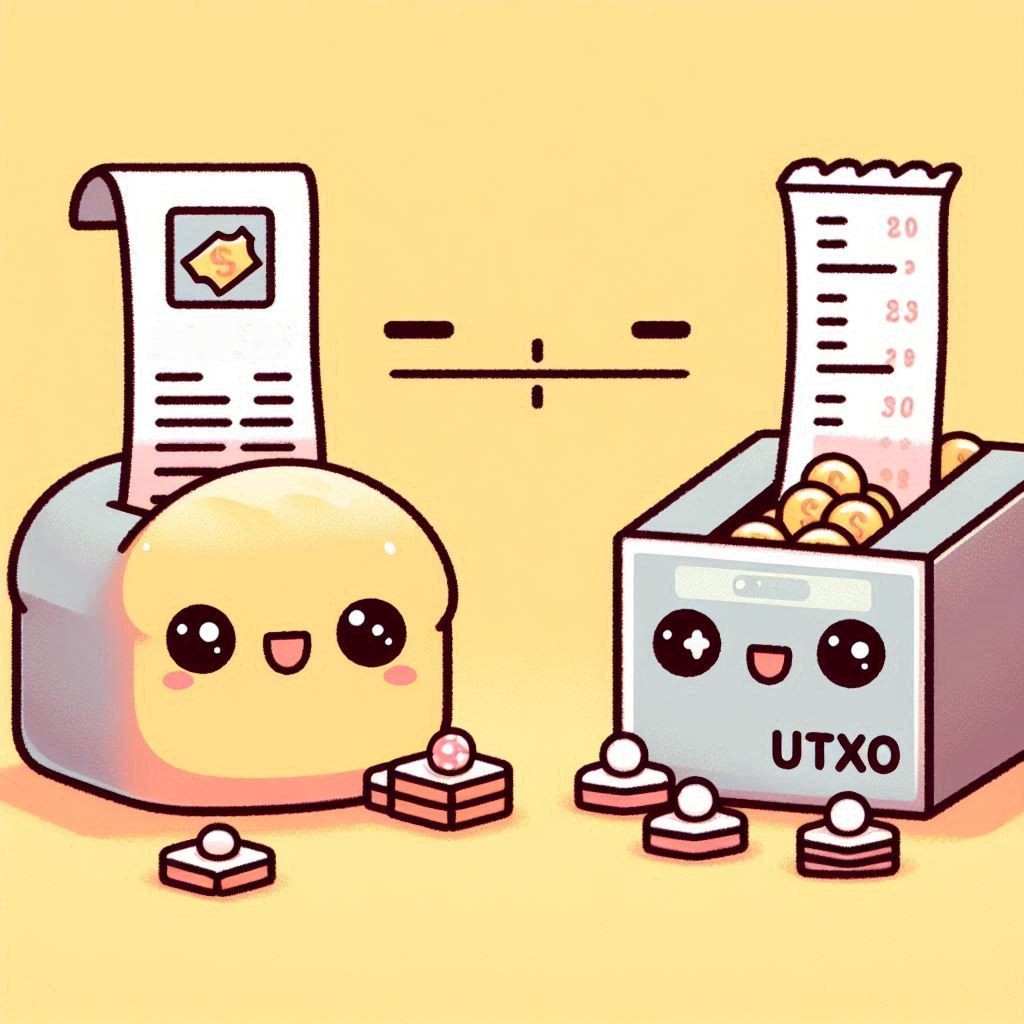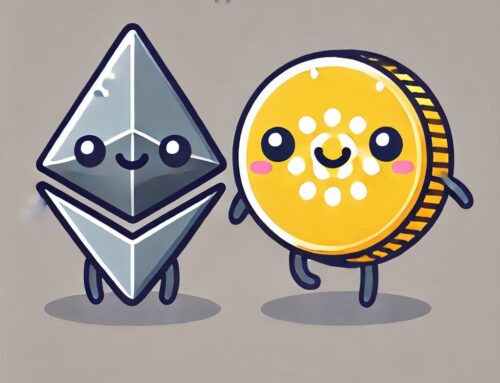Decoding Cardano UTXO Model: Why Digital Receipts Are Cooler Than Bank Statements (Probably!)
Let’s dive into a topic that might sound a tad technical, but is actually a key element of the Cardano blockchain: the Cardano UTXO model! No, it’s not some sort of secret code or a new brand of breakfast cereal. It’s actually the system that Cardano uses to manage transactions.
Forget the traditional bank accounts you’re used to; Cardano takes a different approach, relying on Unspent Transaction Outputs (UTXOs). Think of it like ditching your boring bank statements for a system of digital receipts that offer greater security and flexibility, and that are easy to verify. So, put on your thinking caps and prepare for a wild ride as we explore the intriguing world of the Cardano UTXO model!
The Basics: What in the World is a UTXO, Anyway? (It’s Like a Digital IOU!)
Before we start comparing it to other financial instruments, let’s get down to brass tacks and define what a UTXO actually is. A UTXO, short for Unspent Transaction Output, is essentially a digital receipt representing a certain amount of cryptocurrency that is the result of a previous transaction. It’s the basic unit of currency for the Cardano blockchain.
Digital Receipts (Goodbye, Paper Trails!): Think of a Cardano UTXO as a digital receipt that you get after a transaction, rather than a balance that is recorded in an account. These receipts can then be used as inputs for new transactions, making it possible to easily trace and verify the flow of funds.
Unspent Outputs (The Leftover Change!): These are the remaining outputs from previous transactions that haven’t been used yet. When you make a new transaction, you have to use all the previous receipts as inputs for a new output, which is different from account-based systems where you can just send money to anyone without needing to specify the UTXOs you’re using.
Trackable Value (Following the Money!): Cardano UTXOs are tracked on the blockchain, making it possible to verify the history of every single unit of cryptocurrency, creating greater transparency and accountability. It’s like having an immutable record that provides a verifiable trail of each transaction, which makes it difficult for anyone to engage in fraudulent activity.
How Cardano UTXO Transactions Work: It’s Like a Digital Game of Tag!
Unlike traditional banking, where you have an account with a balance, Cardano UTXO transactions involve moving these digital receipts around, like a sophisticated game of tag. Here’s how the game is played:
Previous Transaction (The Beginning!): You receive some cryptocurrency in a previous transaction. This creates a new Cardano UTXO, which is a “receipt” for that amount.
Spending a UTXO (Time to Pay!): When you want to send cryptocurrency, you have to use the previous Cardano UTXOs as inputs for the new transaction, using the previous receipts as the source of funds.
Creating New UTXOs (More Receipts!): When you use a Cardano UTXO as input for a new transaction, that UTXO is “spent,” and new UTXOs are created, indicating where the funds are being sent and who owns them now.
Change (Don’t Forget Your Change!): If the new UTXO values do not equal the input, a “change” UTXO will be sent to a new address that you control, acting as a digital method for getting any leftover funds from a transaction.
Complete Transaction (Game Over, Sort Of!): The transaction is considered complete when all inputs are accounted for, and new outputs and change outputs are sent to the respective addresses. At that point, the Cardano transaction is then recorded on the ledger.
It’s like using a system where you pay with specific digital receipts instead of simply deducting money from a general balance, adding a layer of complexity, and making sure all funds are accounted for at all times. This can be slightly more complicated than account-based systems, but it is much more secure.
UTXO vs. Account-Based Models: Choosing the Right Approach (Digital Receipts vs. Bank Statements)
Most traditional financial systems and many blockchain platforms use an account-based model. Let’s compare it to the Cardano UTXO model:
Account-Based Model: (Like a Traditional Bank Account!)
Traditional System: This is the model used by most banks, where each user has an account with a specific balance that is continuously updated with credits and debits.
Easy to Understand: It’s easy to understand: a user’s balance is tracked directly, and transactions add or subtract from this balance. It’s like your checking account, where your balance is tracked, and whenever you pay for something, that amount is immediately deducted from your balance.
Simpler Transactions: Transactions simply deduct from one account and add to another, without any UTXOs to manage.
Potential Bottlenecks: In high-traffic scenarios, the need to constantly update balances can lead to bottlenecks, and transactions are prone to replay attacks, which is one of the limitations of account-based systems.
Cardano UTXO Model: (Like a Digital System of Receipts!)
Digital Receipts: This model uses unspent outputs from previous transactions as inputs for new transactions, and it also requires new outputs to be created to account for all of the funds.
More Complex Transactions: Transactions involve the use of multiple inputs and outputs, creating a more complex structure, requiring careful planning to execute properly.
Concurrent Transactions: This model allows for parallel processing of transactions, which can improve scalability by processing multiple transactions at the same time, without having to process each one in sequence.
Enhanced Security: UTXO-based systems have a lower chance of double-spending and are more secure than account-based ones, due to the fact that each transaction is verifiable, and must be traced all the way back to the minting of the tokens.
Unique Scripting: The Cardano UTXO enables a powerful model for executing custom validation scripts, which means that each transaction has a higher level of control.
Advantages of the Cardano UTXO Model: It’s Not Just About Being Different!
So why did Cardano choose the UTXO model over the simpler account-based model? Here are some key advantages:
Enhanced Security (Double-Spending? Not on Our Watch!): The Cardano UTXO model helps prevent double-spending, which is a situation where the same cryptocurrency is spent in two or more transactions. This is because each transaction has to be explicitly tied to specific UTXOs, and they cannot be reused or altered, making it harder for bad actors to manipulate the system.
Increased Scalability (Handle More Traffic!): Cardano UTXO transactions can be processed in parallel, because every transaction is independent, enhancing the network’s ability to handle a large number of transactions, which makes it a great choice for anyone wanting to build a network that can handle high traffic.
Improved Privacy (Keeping Your Business to Yourself!): The Cardano UTXO model provides increased privacy because transactions are not linked to a single account but to specific outputs, which makes it more difficult to track the flow of funds, and protects user identities.
Simpler Smart Contracts (Less Code, More Security!): The Cardano UTXO model simplifies the process of creating smart contracts, providing a higher degree of security, as fewer lines of code means fewer potential vulnerabilities. The simplicity of the Plutus contracts helps to streamline the processes.
Why Cardano Chose the Cardano UTXO Model: A Vision for the Future
Cardano specifically chose the Cardano UTXO model because it aligns with its goals of scalability, security, and innovation. It may be more complex than an account-based model, but it provides significant benefits in these critical areas, and helps Cardano stand out from the pack. It’s like choosing a more complex yet more powerful engine for a high-performance vehicle, in order to be able to access greater power.
The Takeaway: Embrace the Power of Digital Receipts
Cardano’s UTXO model is a unique approach to structuring transactions on the blockchain, using digital receipts instead of simple account balances. While it’s more complex than traditional account-based systems, it provides significant advantages in terms of security, scalability, and privacy, and allows for a more versatile and powerful system. It’s not about following the crowd; it’s about choosing the best technology to build a robust and efficient platform. Understanding the Cardano UTXO model is crucial for appreciating the unique design and functionality of the Cardano network, and how it’s working to change the world.





